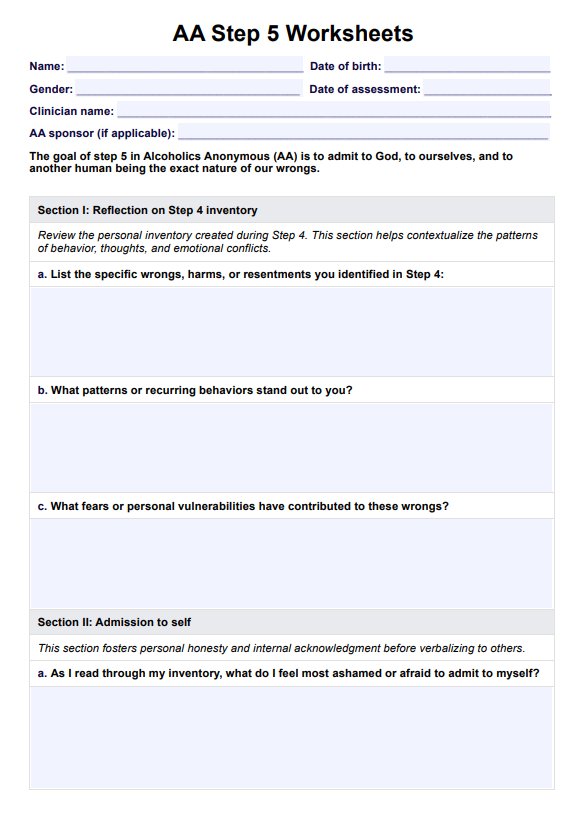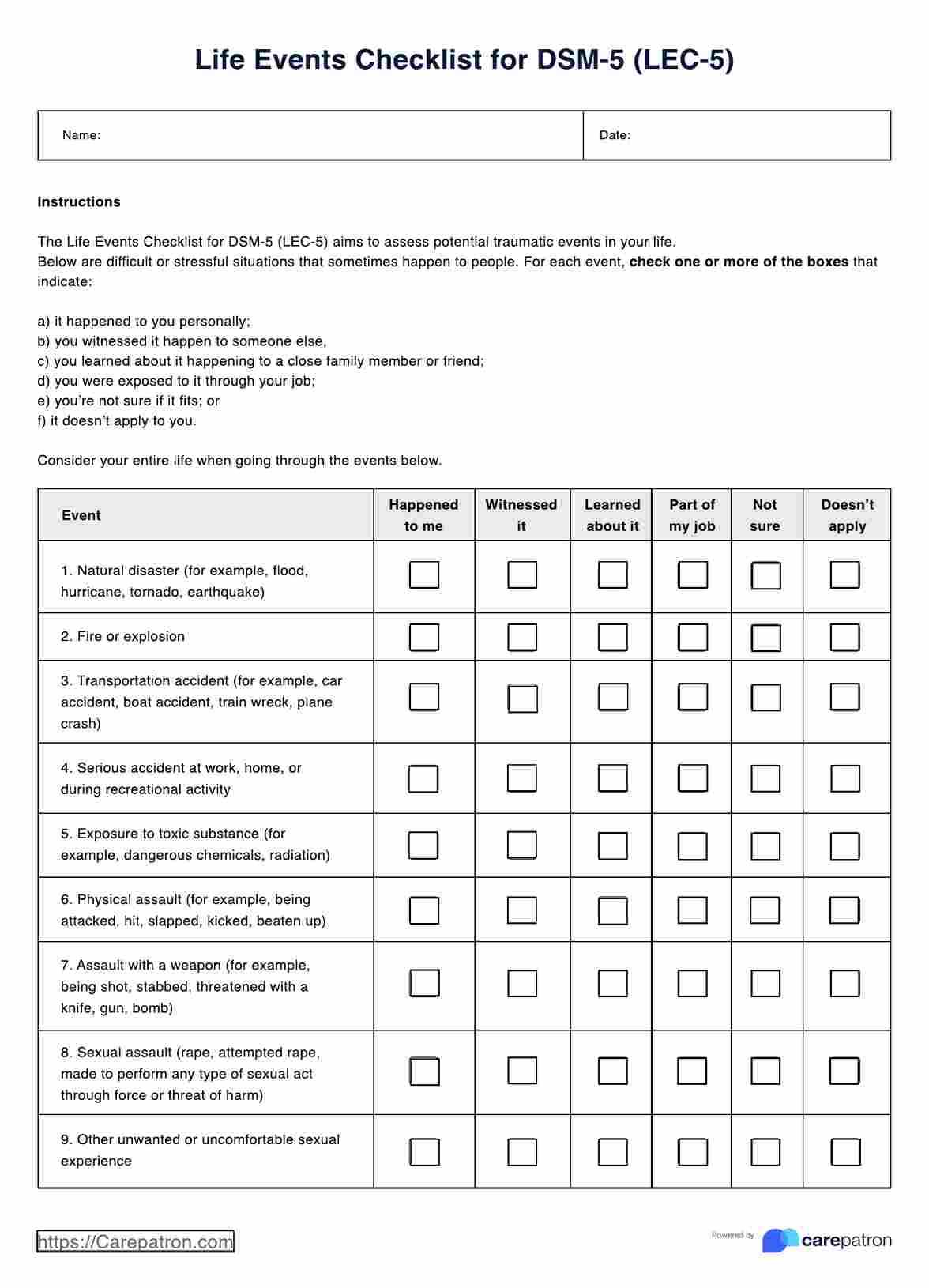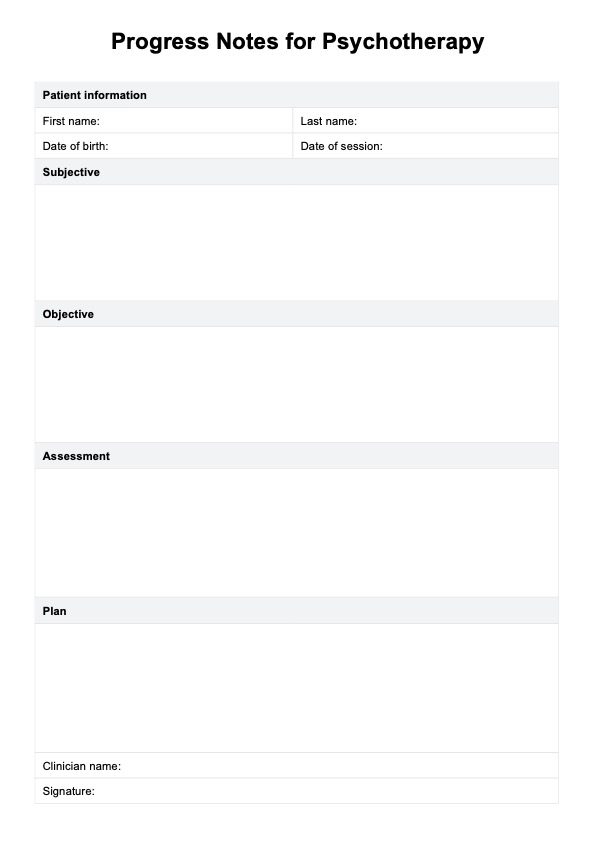Toxic Masculinity Test
Discover how our Toxic Masculinity Test can help identify and address harmful behaviors, promoting healthier masculinity norms.


What is toxic masculinity?
Toxic masculinity refers to cultural norms and behaviors that promote a narrow and harmful definition of manhood, enforcing male dominance, emotional suppression, and aggression as standards men should live by. This concept has roots in societal expectations and gender roles that have evolved over centuries, becoming deeply ingrained in many cultures worldwide, and is a dominant form of cultural norms. Traditional masculinity, at times, pressures men to conform to these standards, potentially leading to mental health issues and negative social impacts. It encompasses attitudes such as male chauvinism, a sense of entitlement, and the devaluation of feminine traits in men, contributing to a wide range of societal problems, including gender inequality and violence.
Toxic masculinity is a concept that emerged from feminist theory and modern social discussions, spotlighting the harmful aspects of traditional masculinity norms. This concept has gained significant attention in recent decades, with mental health professionals and gender studies scholars examining how these societal expectations negatively impact both men's mental health and broader social dynamics.
Research into toxic masculinity has shown that adhering to these restrictive norms can lead to increased mental health issues among men, including depression, anxiety, and stress. It also perpetuates a culture where male chauvinism and a sense of entitlement can thrive, often at the expense of women's rights and gender equality. The feminist movement has played a crucial role in challenging these norms, advocating for a broader, more inclusive understanding of masculinity that allows men to express vulnerability without fear of stigma.
Modern conversations around toxic masculinity seek to dismantle the idea that masculinity must be linked to dominance or aggression. Instead, they promote healthy masculinity, characterized by emotional intelligence, empathy, and respect for all genders. By addressing and challenging the harmful aspects of traditional masculinity, society can move towards more equitable gender relations and improved mental health outcomes for everyone.
Toxic Masculinity Test Template
Toxic Masculinity Test Example
Examples of toxic masculinity
Examples of toxic masculinity often manifest in behaviors and attitudes that enforce traditional gender roles and discourage emotional expression. Here are some common examples:
- Suppressing emotions: Men are often taught to hide their feelings, leading to a lack of emotional awareness and expression. This can hinder personal relationships and emotional development.
- Promoting aggression: The belief that men should be inherently aggressive or dominant can encourage harmful behaviors and conflict.
- Disparaging femininity: Associating femininity with weakness and actively discouraging men from engaging in activities or expressing traits considered feminine.
- Hyper-competitiveness: Valuing competition over collaboration can lead to unhealthy work and social environments where success is achieved at the expense of others.
- Sexual entitlement: Believing that men have a right to women's bodies without consent contributes to a culture that disrespects and objectifies women and where men feel entitled to sexual favor.
- Homophobia and transphobia: Fear or disdain towards those who do not conform to traditional gender and sexual norms is often a component of toxic masculinity, leading to discrimination and violence against LGBTQ+ individuals.
These examples illustrate how toxic masculinity can permeate various aspects of life, reinforcing stereotypes that limit individual freedom and contribute to inequality. Recognizing these behaviors is the first step toward addressing and dismantling toxic masculinity.
Consequences of toxic masculinity
The consequences of toxic masculinity extend beyond individual experiences, impacting mental health, relationships, and societal structures. Here are some significant effects:
- Increased mental health issues: Men who adhere to toxic masculinity norms are more likely to experience depression, anxiety, and other mental health challenges due to suppressing emotions and not seeking help.
- Relationship problems: Toxic masculinity can strain romantic, familial, and social relationships, making it difficult for men to form deep, meaningful connections.
- Substance abuse: There's a higher tendency for men influenced by toxic masculinity to use alcohol or drugs as a coping mechanism for emotional distress.
- Violence and aggression: Toxic masculinity is linked to higher rates of domestic violence, sexual assault, and aggressive behaviors, perpetuating cycles of harm.
- Workplace issues: It can lead to toxic work environments where competition, aggression, and domination are valued over cooperation, empathy, and respect.
- Health risks: Men engaging in toxic masculinity are less likely to seek medical help or engage in preventative health measures, leading to worse health outcomes.
- Social inequality: Toxic masculinity reinforces gender stereotypes and inequality, marginalizing women, non-binary individuals, and men who do not conform to these norms.
Addressing the consequences of toxic masculinity requires a collective effort to challenge harmful norms and promote healthier, more inclusive definitions of masculinity.
What is healthy masculinity?
Healthy masculinity represents a shift away from the harmful aspects of traditional masculinity, focusing on emotional openness, empathy, and equality. It encourages men to express vulnerability without fear of judgment, share responsibilities in personal and professional spheres equally, and engage in respectful, non-violent relationships. Healthy masculinity fosters emotional intelligence, allowing men to process and express their feelings constructively. It challenges stereotypes that dictate how men should behave, promoting a more inclusive and diverse understanding of male identity.
By embracing healthy masculinity, men can contribute to breaking down toxic norms, improve their mental health, and build more robust, equitable relationships and communities.
How does our Toxic Masculinity Test work?
Implementing the Toxic Masculinity Test in a therapeutic setting involves a structured process aimed at identifying behaviors and attitudes associated with toxic masculinity. This guide is structured for mental health professionals to utilize the test effectively with their clients:
Step 1: Access the template
Start by accessing the Toxic Masculinity Test Template from Carepatron. This tool is designed to facilitate discussions around behaviors and beliefs linked to toxic masculinity, providing a starting point for introspection and change.
Step 2: Explain the template
Before administering the test, explaining its purpose to the patient is crucial, clarifying that it aims to explore attitudes and behaviors rather than label or judge. This conversation sets the stage for open and honest responses.
Step 3: Complete the test together
Help the patient answer each quiz question, encouraging them to reflect on their experiences and beliefs. This collaborative approach ensures patients understand each item and feel supported.
Step 4: Review and discuss the responses
After completing the test, review the responses with the patient, discussing areas of concern or interest. This discussion can highlight aspects of toxic masculinity the patient may wish to address and provide insights into their impact on the patient's life and relationships.
Step 5: Plan for addressing toxic masculinity
Based on the test outcomes, you and the patient can develop a plan to work on identified issues. This plan might include therapeutic strategies, educational resources, and practical steps to cultivate healthy masculinity.
By following these steps, mental health professionals can use the Toxic Masculinity Test as an effective tool to initiate conversations about toxic masculinity, supporting patients in recognizing and addressing behaviors that contribute to unhealthy patterns. This process not only aids individual growth but also promotes healthier, more equitable relationships and communities.
Addressing toxic masculinity
Addressing toxic masculinity requires a multifaceted approach, focusing on awareness, education, and supportive interventions. Here’s how mental health professionals and society can work towards mitigating its effects:
- Promote emotional intelligence: Educate men and boys about emotional intelligence, encouraging them to recognize, understand, and express their emotions healthily. Emphasizing empathy and emotional awareness can counteract the stigma of emotional expression in men.
- Challenge stereotypes: Actively challenge gender stereotypes and societal norms that contribute to toxic masculinity. This includes questioning narratives around male dominance, aggression, and the devaluation of feminine traits.
- Encourage healthy relationships: Teach and model the value of respect, equality, and consent in all relationships. Highlighting the importance of healthy, communicative relationships can help dismantle notions of control or entitlement.
- Support safe spaces for discussion: Create safe, non-judgmental spaces for men and boys to discuss their experiences, fears, and pressures related to masculinity. Peer support groups and therapy can provide avenues for such discussions.
- Foster positive role models: Promote positive role models who embody healthy masculinity, showing that strength comes from empathy, cooperation, and emotional resilience.
- Implement comprehensive education: Integrate discussions on toxic masculinity, gender equality, and healthy relationships into educational curriculums at all levels to foster early awareness and prevention.
By addressing toxic masculinity through these strategies, mental health professionals can contribute to a culture that values and practices healthy masculinity. This shift benefits individuals by enhancing their emotional and relational well-being and contributes to a more equitable and compassionate society.
Commonly asked questions
Signs include avoiding emotional expression, using aggression to solve problems, and adhering to strict gender roles.
Dominance, emotional repression, and aggression are often cited as key elements.
Fragile masculinity refers to anxiety felt by men who believe they are not living up to societal standards of manhood or whose masculine identity is being questioned or threatened.


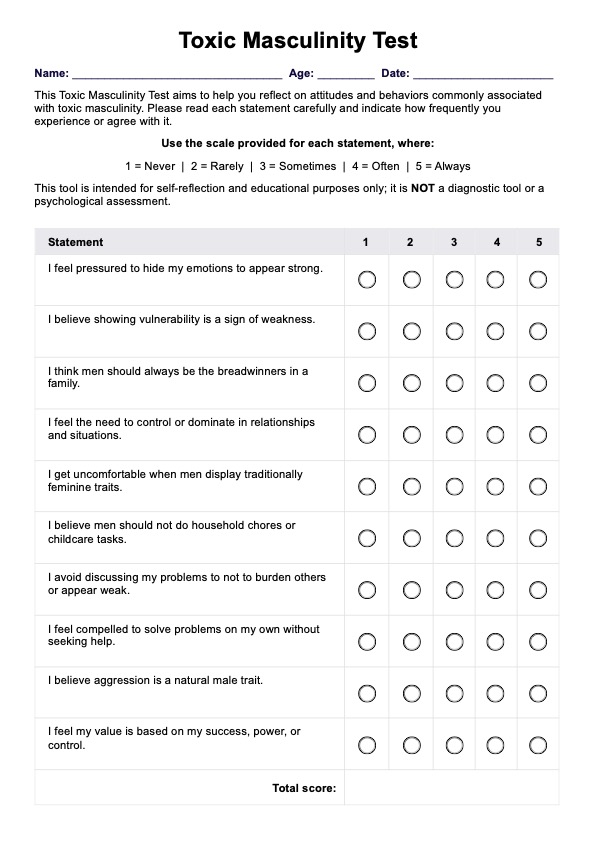
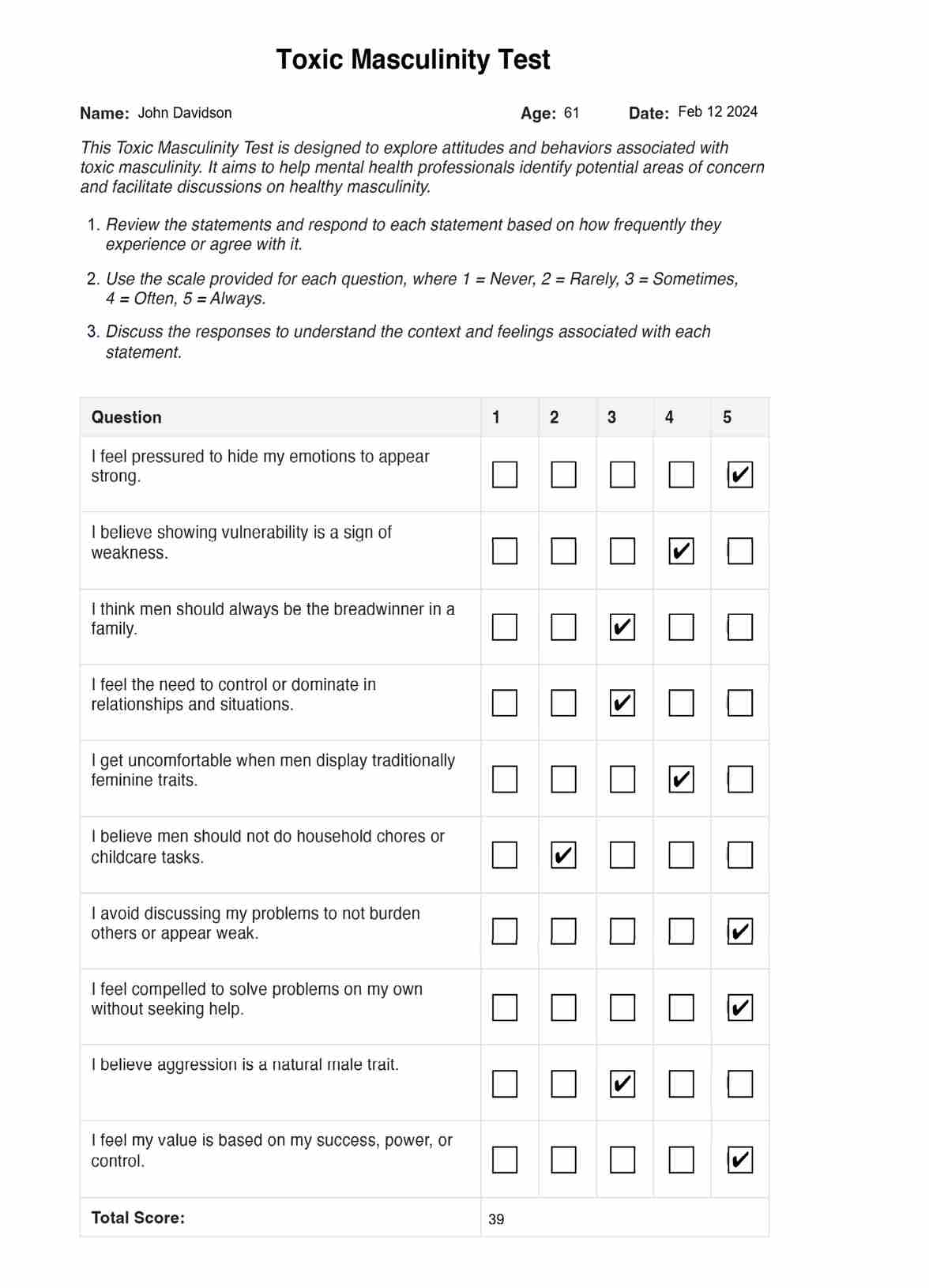

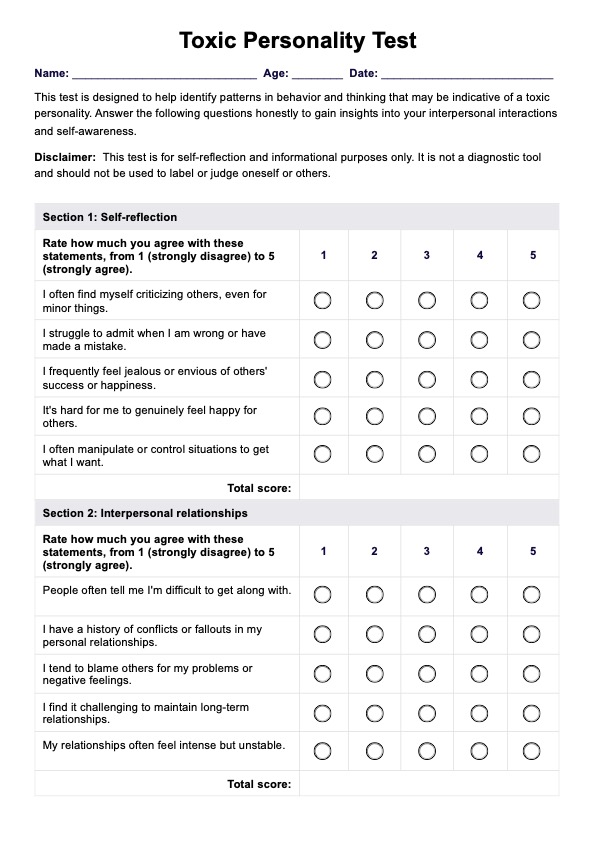
















-template.jpg)



















































































